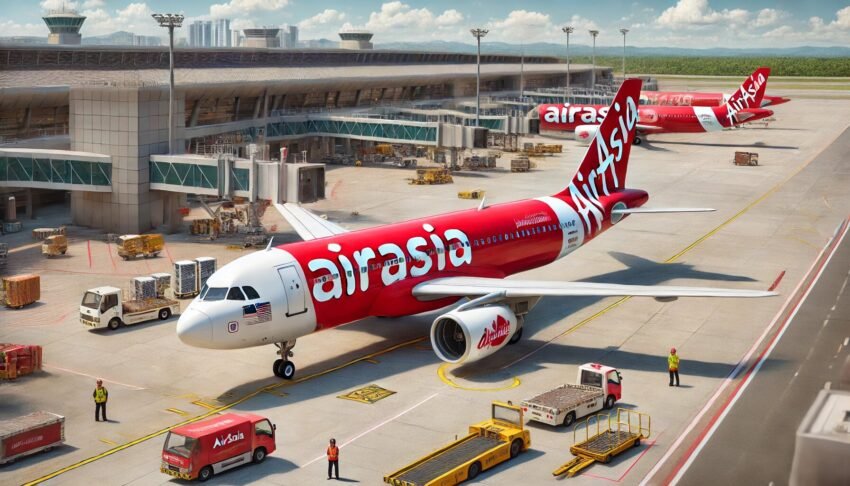Wednesday, July 2, 2025

The global sports tourism market is experiencing an unprecedented surge, with the industry’s projected growth set to reach an astonishing $1.8 trillion by 2030, growing at a compound annual growth rate (CAGR) of 16.1%. This boom reflects a massive shift in how people engage with sports and travel. No longer confined to passive television viewership, sports enthusiasts are increasingly venturing across the globe to experience live sporting events firsthand. From soccer tournaments in Europe to cricket matches in Asia, sports tourism is rapidly transforming into a significant driver of global economic growth.
As more people flock to watch major sporting events and even participate in them, the industry is benefiting from an array of auxiliary services—hotels, restaurants, and transportation. This creates a ripple effect across multiple sectors, stimulating economic growth for cities and countries that host these events. Today, the intersection of sports and tourism is a high-performing sector that shows no signs of slowing down.
This article dives into the driving factors behind this market boom, key segments fueling growth, and the future outlook for the sports tourism industry.
What is Sports Tourism?
At its core, sports tourism refers to the phenomenon of people traveling from their usual surroundings to either observe or actively participate in sporting events. It encompasses a variety of experiences, including:
- Sports Event Tourism: Traveling to watch live sporting events like the Olympics, World Cup, or Super Bowl.
- Celebrity and Nostalgia Sports Tourism: Traveling to meet sports legends or visit iconic sporting venues like Wimbledon or Madison Square Garden.
- Active Sports Tourism: Engaging in physical activities during travel, such as attending a sports camp, participating in marathons, or enjoying an outdoor adventure sport.
The rise in global travel, coupled with the allure of sports, has paved the way for this new, rapidly expanding niche within the tourism sector.
Sports Tourism: Key Growth Drivers
Several factors have contributed to the explosive growth of sports tourism in recent years:
- Increased Number of Global Sporting Events
- Internationally, we are witnessing an increase in the number of sporting events being organized worldwide. From major football tournaments to high-profile Formula 1 races, the calendar is becoming packed with opportunities for fans to engage with their favorite sports.
- Improved Infrastructure and Technology
- Advances in transportation, connectivity, and the development of state-of-the-art stadiums and venues have made traveling for sports events easier and more comfortable. Enhanced digital technologies allow fans to engage with events from anywhere, boosting their desire to attend live.
- Growing Popularity of Niche Sports
- While football remains dominant, sports like cricket, rugby, and motorsport are seeing a sharp rise in global followings. These niche sports create specialized tourism opportunities, driving people to new regions to experience unique sports cultures.
- Government Investments in Sports Infrastructure
- Governments are investing heavily in stadiums, sports complexes, and urban developments to host international events. This infrastructure boost not only improves the overall event experience but also enhances the destination’s attractiveness for tourists.
Segments of the Sports Tourism Market
The sports tourism market is highly diverse, comprising different product types, regions, and categories. Here’s a breakdown of the key segments:
1. By Product Type: Football/Soccer Leads the Charge
- Football/Soccer: With a global fan base of over 4 billion people, football is the largest driver of sports tourism. Major tournaments such as the FIFA World Cup, UEFA Champions League, and Copa America draw millions of spectators from all corners of the world.
- Cricket: Particularly dominant in countries like India, Australia, and England, cricket is increasingly becoming a staple in sports tourism. The Indian Premier League (IPL) is a prime example, attracting a large influx of international tourists.
- Motorsports: High-octane sports like Formula 1 and MotoGP have developed loyal global followings, creating unique travel experiences for fans who seek to visit iconic racing circuits.
- Tennis: Global events like Wimbledon and the US Open bring tennis fans from across the world, adding to the growing demand for sports tourism.
2. By Type: Domestic vs. International Sports Tourism
- Domestic Sports Tourism: The domestic segment remains the largest, with local sporting events, often tied to national pride and culture, attracting substantial numbers of attendees. With major investments in sports infrastructure, domestic tourism has boomed, particularly in regions like North America, Europe, and Asia-Pacific.
- International Sports Tourism: International tourism encompasses people traveling across borders to attend major global events. Whether it’s a World Cup in Brazil or the Olympics in Tokyo, this segment is seeing exponential growth as countries increasingly become hubs for international sporting tourism.
3. By Category: Passive and Active Participation
- Passive Sports Tourism: This includes tourists who travel to watch sporting events. The growing number of fan zones, special viewing areas, and events that broadcast matches in iconic locations further boost passive participation.
- Active Sports Tourism: On the other side, active sports tourism covers tourists who engage directly in sports. This category includes participation in events like marathons, triathlons, and specialized sports camps, which are becoming increasingly popular among travelers looking for adventure and fitness challenges.
Regional Insights: Europe and North America Lead the Market
The global sports tourism market is being driven by significant contributions from major regions:
- Europe: Europe is the largest revenue generator, with iconic sports like football and tennis being central to the continent’s tourism offering. Cities such as Barcelona, London, and Paris are perennial favorites among international sports tourists.
- North America: The US remains a major destination for both active and passive sports tourism. With world-class stadiums and leagues like NFL, NBA, and MLB, North America continues to attract millions of fans.
- Asia-Pacific: The Asia-Pacific region is expected to grow rapidly, driven by an increasing appetite for sports events and infrastructure developments in countries like China and India.
Economic Impact of Sports Tourism
The rise of sports tourism has far-reaching economic benefits for cities and countries that host international events. These include:
- Job Creation: From event staff to hotel workers and tour guides, sports tourism generates significant employment opportunities.
- Boost to Hospitality: Hotels, restaurants, and local retailers experience surges in revenue during major events, leading to an influx of business.
- Local Infrastructure Development: Host cities often see improvements to their infrastructure, including better roads, public transport, and sports facilities.
Challenges and Opportunities
Despite the massive potential, the sports tourism market faces several challenges:
- Event Cancellations and Financial Support: Issues like financial instability and a lack of support for franchises could lead to event cancellations, hurting the tourism market.
- COVID-19: The pandemic had a devastating impact on travel, but the sector is recovering with a strong demand for sporting events.
On the flip side, the increase in fan zones, innovations in sports-related experiences, and the growing accessibility of international events offer enormous growth opportunities.
Conclusion: The Future of Sports Tourism
As the world emerges from the effects of the pandemic and global mobility increases, sports tourism is poised to continue its impressive growth trajectory. With major sporting events becoming more accessible to international tourists, both active and passive participation is expected to grow exponentially. The continued development of infrastructure and the rise of digital fan engagement further strengthen the sector’s appeal.
The future of sports tourism is bright, and with its projected market value reaching $1.8 trillion by 2030, it remains a key pillar of the global tourism industry.
«Enjoyed this post? Never miss out on future posts by following us»








